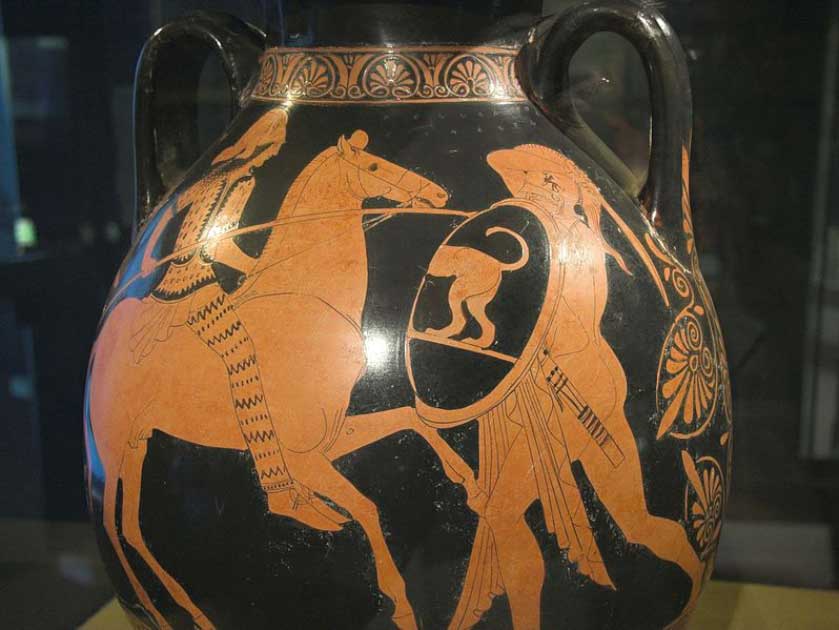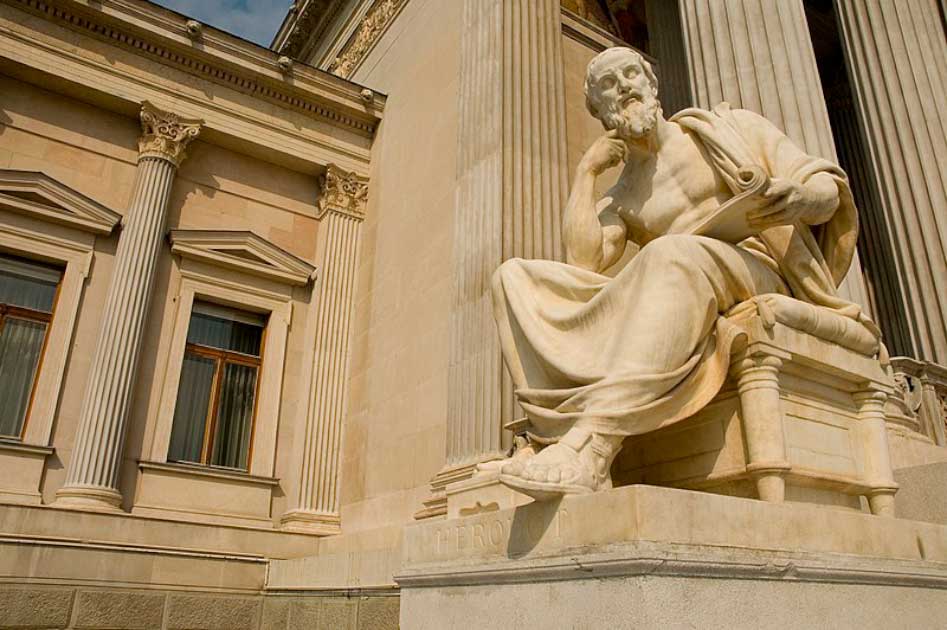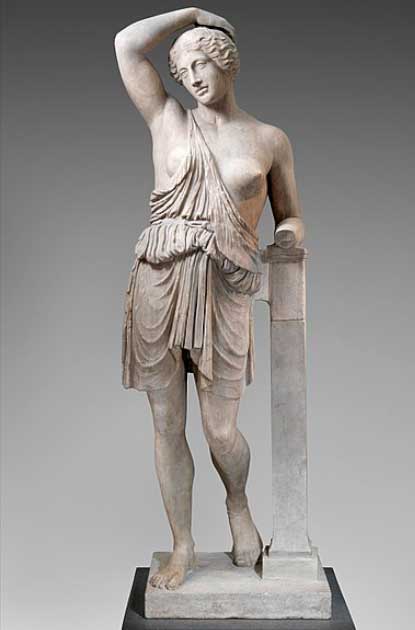Today, boosted by pop culture icons such as DC Comics’s Wonder Woman, millions of people are familiar with the Amazons. In Greek Mythology the Amazons were a tribe of skilled female warriors and hunters, capable of beating any man on the field of battle.
For a long time, it was unclear whether these fierce female warriors were purely mythological or if they had a basis in historical fact. We might just finally have an answer.
Who Were the Amazons?
The Amazons were a common fixture in Ancient Greek myths and legends. For example, they played prominent roles in tales such as the labors of Hercules, the Argonautica, and theIliad. They were always portrayed as a tribe of female warriors and hunters whose martial prowess was superior to men. They were physically stronger, more agile, and experts in archery, horse riding, and armed combat.
The Amazons were said to hail from a purely female society. Their borders were closed to men. Their only interactions with men were either on the battlefield or once a year when they would find and socialize with men for the sole purpose of reproduction. The Amazons would keep their daughters and either kill any sons they produced or hand them back to their fathers.
The myths claimed that the Amazons hailed from a land at the edge of the known world. They were said to be hostile to men, killing male trespassers on sight. They were often portrayed as the archenemies of Ancient Greek heroes. Many Greek heroes, such as Hercules and Theseus had to fight an Amazon Queen at some point or another to prove their mettle.
Why Were They Called Amazons?
There is an oft-repeated “fact” that Amazons had a tradition of cutting off one of their breasts. It was said that they did this to more easily fire a bow and hurl a spear. Anyone who has seen a female archer or watched female javelin throwers will know this reasoning is a little absurd.

The Greek historian Hellanikos, from the 5th century BC, was the first person to try and explain the Amazons’ name. He claimed the “a” meant “lack” and “mazon” was close to the Greek word for breast, meaning Amazon stood for “lack of breast”. But modern linguists believe he was wrong.
They believe that the Amazon name likely had early Iranian or Caucasian roots. All Hellanikos did was force a Greek meaning onto a foreign loan word. No contemporary historian agreed with him but later scholars lapped up his explanation until it became accepted knowledge.
And the confusion as to this warrior race only gets worse from here. Even the Ancient Greeks, the ones who put the Amazons in their stories, appear to have been unsure as to whether the Amazons were real or not.
The first mention of the Amazons that we know of was in Homer’s Iliad, written in the 8th century BC. From the very beginning, they were a popular foe and over the generations the Greeks kept writing about them, adding them to more and more myths.
Most importantly, the Amazons played a starring role in the founding of Athens in the story of the Attic war. A war between the Amazons on one side and the Athenians led by Theseus and Heracles on the other.
By the mid-sixth century, the ultimate defeat of the Amazons and the founding of Athens had become almost one and the same. As the Amazons became increasingly crucial to Athenian national identity the Greeks became increasingly obsessed with finding evidence that the Amazons existed. It was a point of pride, without the Amazons Athens’s founding was a lot less impressive.
Various Greek historians attempted to explain what had happened to the Amazons after their supposed defeat at Athens and where they had disappeared to. Ultimately, it was the 5th century BC historian Herodotus “the father of history” who filled in the gaps to give a definitive answer.

Herodotus believed the Amazons’ capital was Themyscira, a well-defended city located on the banks of the Thermodon River near the Black Sea Coast. Supposedly the Amazons split their time between pillaging neighboring nations and going as far afield as Persia on raids. Herodotus believed they kept their numbers healthy by procreating with a neighboring male tribe once a year. Baby boys were sent back while girls were kept.
He believed that this status quo ended with the Amazons’ defeat at the hands of the Greeks at the Battle of Thermodon (pivotal to Athens’s founding story). Herodotus claimed that after the battle three shiploads of Amazon prisoners ran aground near Scythia. There they met and intermarried with the Scythians.
This spelled the end of the Amazons and gave rise to a new tribe of Scythians called the Sauromatians. He claimed these people still existed and lived in a society where men and women were equal and dressed the same. Supposedly a Saurmatian woman could not marry until she had killed a man in battle.
The only problem is Herodotus didn’t really cite a lot of evidence. His theory was pretty much the equivalent of ancient fanfiction. He’d taken the Amazon myth and given it a plausible-sounding ending, throwing in some real-world place names for good measure.
The trail went for cold centuries. Later historians tried to prove the Amazons were real but with little success. One popular theory in the 20th century was that the Amazons had never existed. It was posited that rather than a female warrior tribe the Greeks had come across a beardless tribe that they had mistaken for women.
It wasn’t until the early 1990s that the pieces started coming together. A joint US-Russian team of archaeologists was excavating a 2000-year-old burial mound, a kurgan, near Pokrovka, a Russian outpost near the Kazakhstan border when they made an amazing discovery. They found 150 graves that belonged to Herodotus’s Sauromatians and their descendants, the Sarmatians.

In these graves, they found the bodies of warrior women who had been buried with their weapons. Some of the women had clearly died in battle, such as one who had been buried with an arrow still embedded in her chest. The women were also taller than normal for their time, 5 foot 6 inches (Amazons were supposedly very tall). It seems Herodotus hadn’t been making things up.
Conclusion
So were the Amazons real? As they appeared in the myths and legends, probably not. Despite centuries of trying no evidence has been found of a fierce race of warrior women who lived on a magic island and invaded Greece.
However, evidence of their inspiration has been found. The archaeological evidence found of the Sarumatians backs up a large amount of what Herodotus claimed. These nomadic tribes may have been mixed gendered but their women certainly played a much different role than their contemporaries.
If Herodotus got that much right, who knows maybe they really were descendants of the Amazons, and someday we’ll find even more evidence. In the end, does it really matter? Whether or not the Amazons were real they have inspired generations of strong women who have worked to change the world for the better.
Top Image: Recent archaeological evidence has reignited the debate around the Greek myth of the Amazons. Source: Aliaksandr Siamko / Adobe Stock.